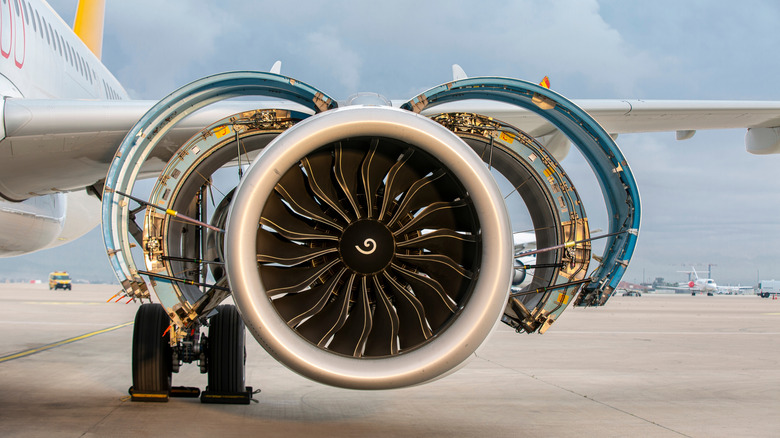Why Jet Engines Have Spirals (And Why It Matters)

The Hidden Safety Feature on Jet Engines
If you've ever had the chance to look closely at a commercial jetliner, you might have noticed a spiral painted on the center of its engine fan. At first glance, it might seem like just a decorative element, but this small design plays a crucial role in ensuring safety, especially for those working near the engines on the tarmac.
Jet engine blades spin at incredibly high speeds—sometimes between 2,200 and 4,500 revolutions per minute. As a result, they can appear almost invisible when running. That's where the spiral comes into play. Once the engine starts, the white spiral turns into a fast-moving blur, serving as a clear visual warning that something powerful and dangerous is in motion. Ground crew members wearing hearing protection often cannot hear engines ramping up, so in loud, chaotic environments like airports, the spinning spiral may be the only sign that alerts them to stay back.
Visibility and Safety
The spiral is typically painted directly onto the spinner cone, which is the central hub of the jet engine intake. This placement ensures that it catches the eye and creates a bright, swirling warning when the engine is active. This small design helps transform a nearly invisible danger into a visible alert. Without it, a crew member walking nearby might not realize the engine is running until it's too late. In busy airport environments, where noise and distractions are constant, this visual cue is often the most reliable way of warning ground workers.
The style of the spiral can vary, with some being thick and coiled, while others resemble horseshoes, commas, or apostrophes. Regardless of the design, these spirals grab attention instantly. With engines capable of sucking in objects from several feet away, especially at full throttle, any added visibility makes a critical difference. For example, on a Boeing 737, the danger zone can extend up to nine feet at idle and as far as fourteen feet at full power, putting anyone too close at serious risk. When such a powerful machine is in operation, the spiral design helps issue a clear warning, ensuring everyone knows exactly when the engine is spinning.
Could These Spirals Scare Off Birds Too?
While the primary purpose of the spiral is to protect humans, there's an ongoing debate about whether it also helps prevent bird strikes. Some birds might mistake a jet engine's dark center for shelter, but when that center has a flickering spiral spinning at high speed, it becomes less inviting. A Japanese airline, ANA, once experimented with spiral-like eye designs on its planes and saw a notable drop in bird strikes with airplane engines.
Bird strikes are a serious issue, costing airlines hundreds of millions each year and potentially leading to catastrophic failures. Although Boeing has questioned the effectiveness of spirals as bird deterrents, engine manufacturers like Rolls-Royce suggest they may help. Whether it's keeping a plane safe or scaring off birds, these small paint jobs do more than you might think. ANA alone saved nearly $200,000 annually after adopting spirals—and if it helps prevent just one accident, it's worth every brushstroke.
The Importance of Visual Cues in Aviation
In the aviation industry, even the smallest details can make a significant difference in safety. The spiral on jet engines is a prime example of how a simple visual cue can have a major impact. It serves as a vital tool for ground crews, helping them recognize when an engine is active and avoid potential dangers. Additionally, there's growing interest in whether such designs could also contribute to reducing bird strikes, further highlighting their importance.
As technology continues to evolve, so too do the methods used to ensure safety in aviation. The spiral on a jet engine is a testament to how thoughtful design can enhance both human and mechanical safety. Whether it's preventing accidents on the tarmac or deterring wildlife, this small feature demonstrates the value of innovation in the aviation sector.
Post a Comment for "Why Jet Engines Have Spirals (And Why It Matters)"
Post a Comment